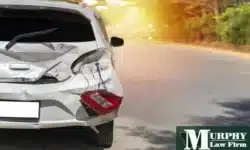Overcoming the financial impacts of paralysis injuries and permanent disability after a car crash
Paralysis is a life-changing condition that can arise due to various reasons. Car accidents are among the leading causes of accidental paralysis.
According to research by the National Spinal Cord Injury Statistical Center, approximately 17,700 SCI cases are reported each year in the United States, with 54 new cases arising per 1 million people resulting from automobile accidents.
A motor vehicle collision can cause the spine to contort, rotate or compress beyond its natural state forcibly. This causes several spongy discs located between the vertebrae to rupture or shift out of place. That alone can cause detrimental damage as these discs serve as a cushion to ease the spine’s movement.
More so, contact with the surrounding nerves along the spine is enough to send waves of excruciating pain down the victim’s receptors. These slipped out or herniated discs are the most common result in car accident victims.
Research from the Montana Department of Transportation shows a reported case of 184 fatalities in 2019 due to road carnage and reckless driving. In extreme accident cases where victims survive, they may suffer a disability, affecting their quality of life.
Montana Brake-Check Accidents
Aggressive driving is one of the most preventable causes of car accidents. Road rage is often a factor in these types of cases, and the consequences of someone acting upon their anger can be devastating.
Common types of paralysis
Your spine is responsible for conveying millions of signals from your brain to your body. Any damage to this neural link can prevent these messages from relaying, eventually leading to mild or permanent paralysis regardless of the bruising, severing or grazing of the spine.
Complete versus incomplete paralysis
Complete paralysis is a term used to describe the specific condition of the nerves’ ability to convey messages along with the injury site. During complete paralysis, all essential communication is hindered, leading to a complete loss of sensation and mobility below the site. This means that moving the muscles is not feasible, leaving the victim paralyzed after a car accident.
Incomplete paralysis involves an extent of mild paralysis, and sensation can be felt below the injury site as neural communication has not been entirely severed. This means that one has some control over their muscles, thus experiencing temporary paralysis after a car accident.
Quadriplegia versus paraplegia
Quadriplegia (or tetraplegia) is defined as the complete loss of motor function and sensation in the torso and limbs. Quadriplegia occurs when trauma is sustained on the thoracic spine or in the sections of the cervical vertebrae. The degree of sensation lost may vary depending on the nature of the trauma. In car and motorbike accidents, successful rehabilitation is possible for most spinal injury victims.
Paraplegia is defined as the loss of sensation and mobility in the legs and upper torso. It can also affect the arms and part of the chest in severe cases, leaving control over the head and neck. Car accident spinal cord injury (SCI) victims may experience tingling sensations in their limbs, especially legs. However, those suffering extensive damage may bear permanent disability and complete loss of sensation below the waist.
Monoplegia versus hemiplegia
Monoplegia is the paralysis of one limb, such as the arm or foot, when trauma to the spine is not as extensive as imagined. It only affects one limb at a time and can require up to 28 days of physical therapy and rehabilitation to regain mobility.
Hemiplegia occurs when the neural link on the spine that sends messages to control movements has been damaged. It leads to the muscle paralysis of one side of the body affecting the right or the left half of the face, leg and arm.
Treatment options for paralysis
Most SCIs can be treated depending on the extent of the damage. Wounded herniated discs can be restored via conservative treatment coupled with steroids, painkillers and anti-inflammatory drugs. If the conservative treatment proves unsuccessful, disc replacement surgery may be used as an alternative. While the surgery can help solve the problem, once critical nerve damage has been sustained, the patient may live with disability forever.
While paralysis is a non-curable and permanent ailment, most medical practitioners will take you through a series of holistic rehabilitation sessions, including physical therapy to help you get acquainted with dealing with the disability.
In addition, mobility devices, such as wheelchairs, can help the accident victim move about with more freedom and prevent complications. One can expect to accrue a hefty medical bill with these treatment options, depending on their condition.
Costs associated with paralysis and disability
The short- and long-term medical costs in treating paralysis as a result of SCI tend to be expensive. Neuropathy treatment can range from $20,000 to $90,000 and more per session, depending on the number of dysfunctional nerves.
On average, the medical expenses to treat SCI within the first year can cost $550,300 and accumulate to $72,900 to $170,000 with each passing year. Unlike most conditions, the treatment of paralysis is a lifelong commitment requiring long-term medical care. For persons suffering from quadriplegia, they may end up spending over $4,724,000 during their lifetime.
Considering these factors, you can quickly determine the detrimental consequence of coping with a disability to their financial and emotional health.
On top of dealing with the emotional and physical repercussions, the medical costs associated with paralysis can leave you in an array of debt, which is why it’s vital to hire a professional Montana car accident lawyer to safeguard the compensation that you deserve.
How our car accident lawyers in Montana can help
At Murphy Law Firm, we pride ourselves in offering professional legal representation to all car accident paralysis victims and their families in Montana. Our expert attorneys help open a viable claim and account for all the pain and suffering endured to secure fair compensation.
Contact us for your free consultation and receive immediate assistance from a compassionate attorney with experience in catastrophic injury cases.
Montana Head-On Collisions:
A Guide to Compensation
Learn how to prove fault and recover maximum compensation after a head-on collision in Great Falls.





